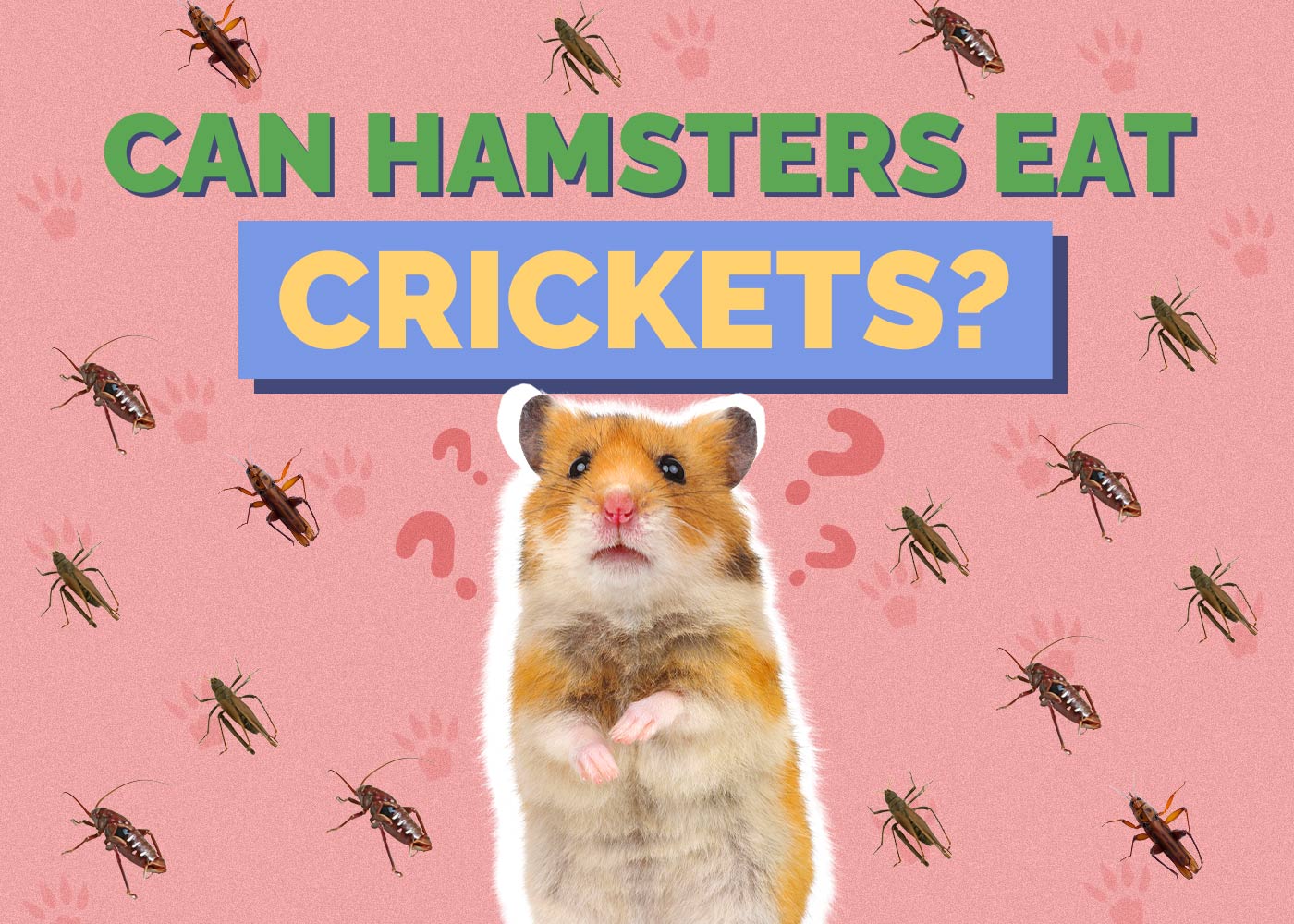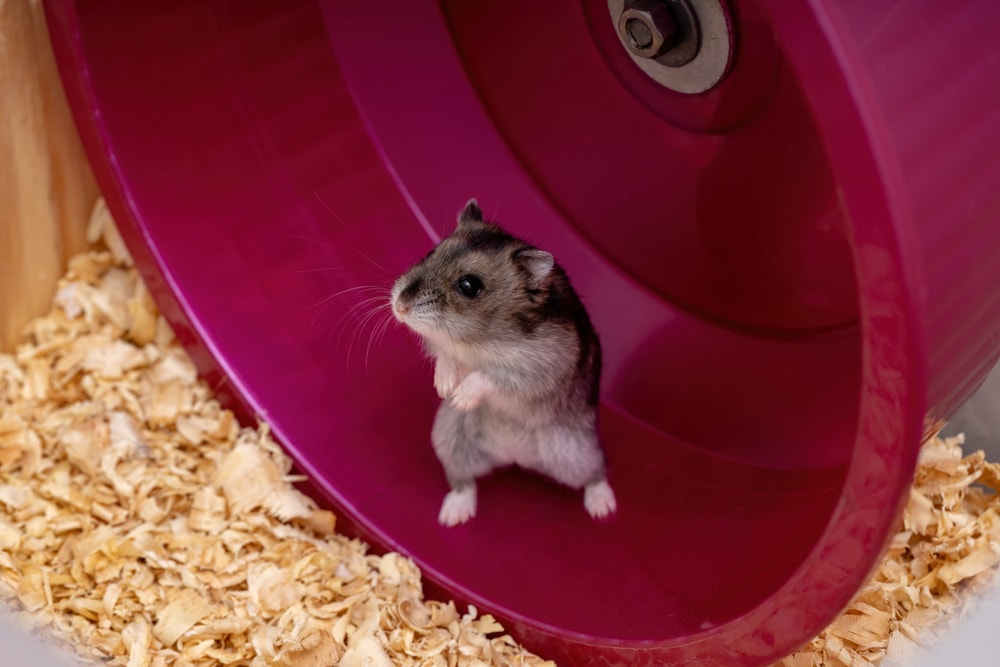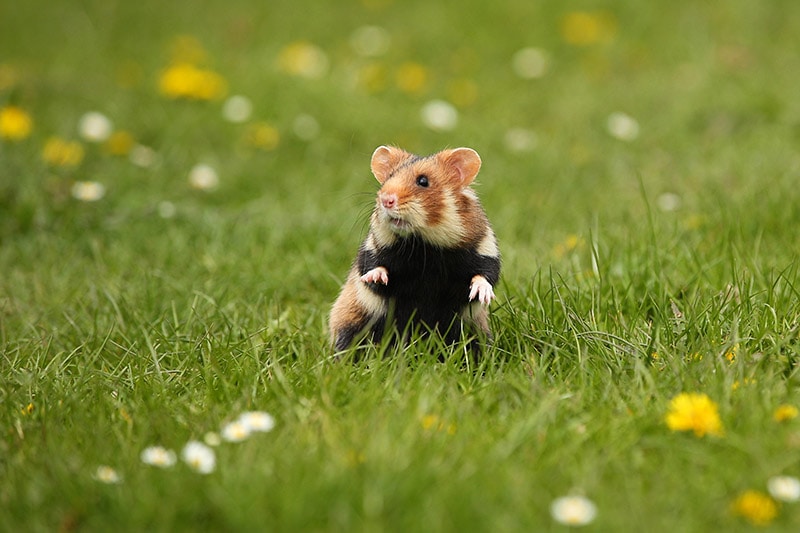Can Hamsters Eat Crickets? Vet-Reviewed Nutrition Guide
By Kit Copson
Updated on

Click to Skip Ahead
When we think of hamsters, we often picture them munching away on a piece of vegetable or stuffing their cheek pouches with seeds, but did you know that hamsters are omnivorous rather than herbivorous? In the wild, they eat a combination of seeds, plants, and insects.
Some hamster parents feed their fuzzy friends live or dried crickets and other insects, and this is fine as long as these are offered as part of a varied diet.
Are Crickets Healthy for Hamsters?
Yes, when fed in moderation. In the wild, hamsters will eat various insects if given the opportunity because they’re a good source of protein, iron, calcium, fiber, and other minerals and vitamins.
A commercial hamster pellet food should be the mainstay of your pet hamster’s diet, but some people like to provide their hamsters with extras like insects, for more variety and balance. Live crickets can also provide activity and enrichment for your hamster.
It’s not wise to feed too many crickets or other insects to your hamster, though, as this can result in them gaining too much weight, so consider them as more of a treat than a regular meal. A balanced diet with an assortment of food types is best, and we’ll offer some recommendations further down.
Can Feeding Crickets to Hamsters Be Dangerous?
If the crickets have come into contact with harmful chemicals, then yes. For example, if you take crickets or other insects from outside, they may have come into contact with pesticides that could make your hamster unwell. It’s also possible for crickets to carry parasites. For this reason, it’s best to opt for crickets bought from pet stores or reputable breeders.
In addition, though it is rare, live crickets do bite on occasion. That said, your hamster won’t be eating lots and lots of crickets (at the risk of ending up too chunky) and they’re pretty effective insect hunters, so the chance of this happening is fairly low. Make sure the crickets offered are not too big for the size of your hamster and remove any uneaten crickets from the cage after a few hours.

Do Hamsters Like Crickets?
Just because hamsters can eat crickets doesn’t mean every hamster likes them. Some prefer other animal-based proteins like mealworms, while others aren’t keen on bugs at all. If your hamster doesn’t eat all of their live food, remove the insects from the enclosure.
What’s an Ideal Hamster Diet?
A varied and balanced hamster diet consists of clean water, and good-quality hamster pellets that contain 15–25% protein, 30–40% carbohydrates, 4–5% fat, and 5% crude fiber. These should be a staple in the diet. You can also offer washed fresh fruit and vegetables in small amounts (a cube’s worth per day is an ideal amount) and protein-rich foods and cereals/grains as supplements.
Supplementary foods may include insects, boiled eggs, seeds, nuts, plain cereals, and wholewheat crackers in moderation. Be careful, though—many of these foods are high in fat, so should be offered only on occasion. Break or cut them down to size if necessary.
Bear in mind, too, that not every type of fruit and vegetable is safe for hamsters. For example, some of the plants and veggies hamsters can’t eat include onions, chives, leeks, garlic, eggplants, chili peppers, uncooked kidney beans, raw, green potatoes, citrus fruits, rhubarb leaves, or tomato plants.
Alternatives to Feeding Insects
If you’re squeamish about feeding live insects to your hamster, there are plenty of other protein sources you can offer as treats in small amounts, including:
Note: All foods should be plain and unsalted. You may need to cut nuts in half for smaller hamsters because they’re high in fat.
- Boiled eggs
- Sunflower seeds
- Cashew nuts
- Walnuts
- Cooked chicken
- Cooked turkey
- Dried insects
- Tofu

Final Thoughts
It’s fine to offer your hamster a cricket or two now and then if they enjoy them, but avoid going overboard, or you may end up with a fluffy chub on your hands. Balance and variety are the keys to a healthy hamster diet, so change up your hamster’s greens, fruits, and treats regularly.
See Also:
Featured Image Credit: BubbleJuice, Pixabay












